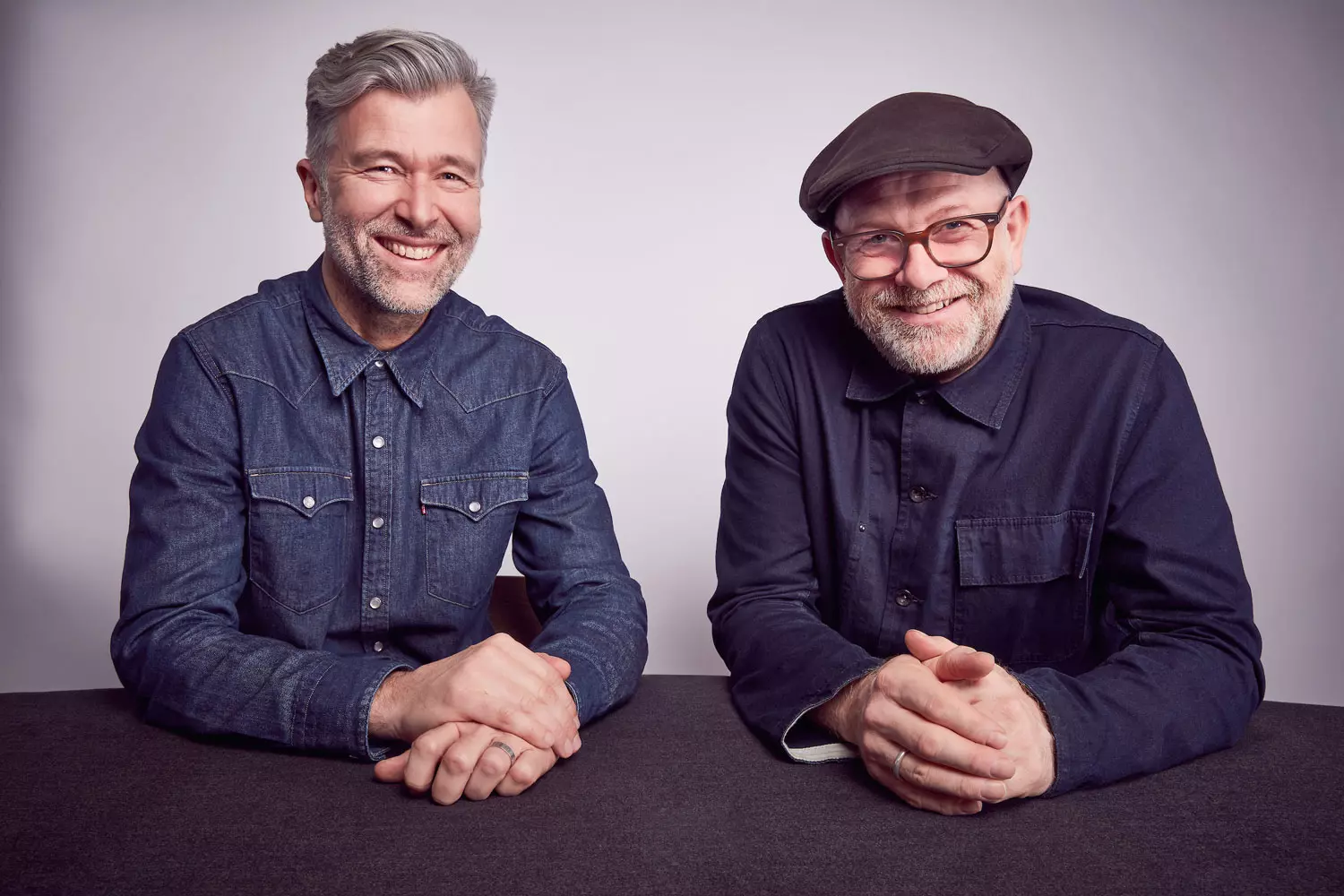INTERVIEW WITH PEARSON LLOYD
We spoke with Tom Lloyd and Luke Pearson about the development of PORTS as a New Leadership Environment.


We spoke with Tom Lloyd and Luke Pearson about the development of PORTS as a New Leadership Environment.
The designer duo from London impressively proves again and again what high-quality industrial design is all about - namely the intelligent implementation of changing working methods and living conditions in new products and usage concepts. 10 years after the joint development of the PARCS product series, the London-based design firm PearsonLloyd has once again collaborated with Bene on an innovative office concept: PORTS.
We spoke with Tom Lloyd and Luke Pearson about the development of PORTS as a New Leadership Environment.
What was the original motivation behind the project idea?
Luke Pearson: In fact, PORTS was born out of an ongoing exploration of the broader context of people and relationships in offices, and a deconstruction of traditional hierarchical boundaries.
Tom Lloyd: We began working with Bene in 2007 to find new ways of interpreting the workplace. Since then, new ideas have emerged every year in our search for better and more effective work environments. As these evolved, we noticed that these approaches rarely considered how to support senior leaders in their work. The style of "management furniture" seems to have stopped at the traditional and status-based. There are few efforts to creatively address the needs of executives and how they might improve their work. This is exactly where PORTS came in: How can we apply the approaches that gave rise to PARCS to new executive work environments?
What is special about a New Leadership office?
Tom Lloyd: A completely new interpretation of what an executive's office should look like and what it should do.
Luke Pearson: The New Leadership office is a dynamic space with unpredictable characteristics, as traditional executive identifiers are no longer as important as they once were. What we need today are truly intelligent spaces to foster dialogue and focus. This is precisely why the flexible design of PORTS is particularly suited to this.
Who did you design PORTS for?
Luke Pearson: PORTS was designed for executives, but we believe it promotes a much more integrated and democratic work environment.
Tom Lloyd: For everyone. Especially for people who have responsibility in companies. But basically for anyone who needs time and space to think and organize and wants to retreat, in an atmosphere that fosters clear thinking. PORTS is also a place for collaboration, a space for uncomplicated communication - talking, presenting, discussing, planning, creating.
Was PORTS created just for the office?
Luke Pearson: I see PORTS as being at home in a hotel lobby, airport lounge or office. The traditional boundaries of work will remain, while new technologies will make our work lives more diverse.
Tom Lloyd: No - the needs that PORTS addresses and the experiences we want to provide are equally relevant to hospitality and transportation places. The world of work has become increasingly decentralized, and technology has changed how we connect with the world around us. Today, the truth is that we work where we are.
What's so special about PORTS?
Luke Pearson: There are smart features built into PORTS. I like how the individual products can be changed dynamically and in relation to posture. Most of the features are very subtle and don't stand out until you discover them.
Tom Lloyd: The market for management spaces and furniture is still defined by hierarchy and old status concepts, with no attention to user needs; the market hasn't changed in more than a century. PORTS aims to redefine how a private workspace looks and functions.
What does the PORTS product line consist of?
Luke Pearson: PORTS consists of three elements: A shelving system, a table and a functional lounge furniture collection.
The flexible shelving unit, which provides personal storage and space for technology, also serves a dual role as a room divider.
The height-adjustable table is visually very simple, but the subtleties are in the details. It is a table with one motor per table leg for height adjustment. This makes the table look very light and minimalist. While most of these creations look like complex machines, here we have another piece of furniture in front of us.
The Task Lounge is a lounge chair with a unique reclining seat shell that allows for relaxed reading and reclined work, but when activated puts the user in a more upright position for laptop work. The product is equipped with a laptop table, which is suitable for different postures at work and allows to create different working environments. The supporting wall element is also a screen. Thus, the armchair can be placed freestanding and still provide a certain level of privacy.
Lounge chairs and sofas are in many ways very conventional lounge furniture, but they are an essential part of modern office landscapes and the perfect addition to the product family.
Tom Lloyd: Three separate product collections that harmonize with each other - creating informal, private and collaborative open work spaces.
What aspect connects PARCS and PORTS?
Tom Lloyd: Both PARCS and PORTS challenge the archetype. They are both research-based, risk-taking, and offer transformative innovation. They create informal, expressive, inspiring and enjoyable spaces.
Luke Pearson: PORTS is in many ways an extension of the approaches that led to PARCS. Both projects are about facilitating good communication. Clearly, PORTS focuses on leadership situations, where the focus is on the personal, but also allows for a private setting to work. Thus, PORTS is dynamic and flexible to be transformed very quickly from an environment for one (leadership) person to a workplace for groups. Many different changes of posture are possible.



